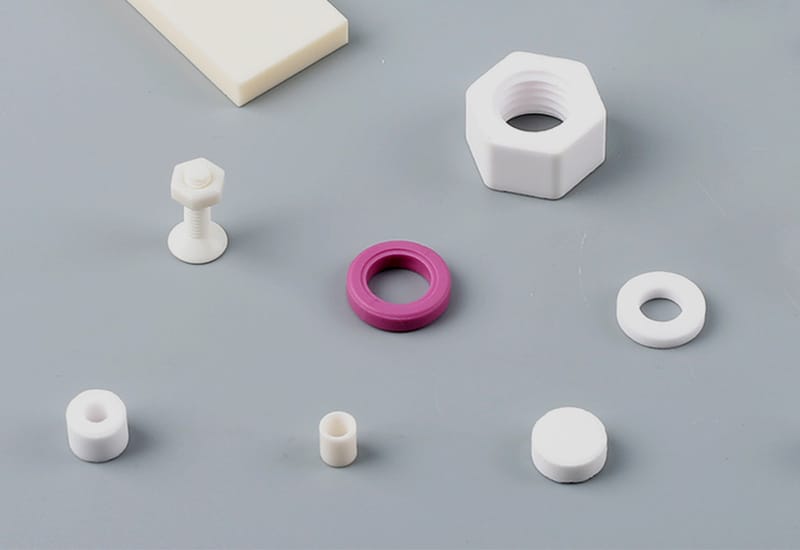Sintered Ceramics
BLUE has the capability to handle the entire production process of sintered ceramics, including forming, sintering, precision machining, and testing, and can customize production according to your requirements.
Why Choose BLUE?
BLUE offers outstanding sintered ceramics, utilizing advanced production machines, stringent quality control, and comprehensive inspections—your trusted choice.

BLUE High Quality Standards
BLUE assures your product quality with ISO 9001:2015 certified quality management system. We provide a one-year warranty on your sintered ceramics.

Standard Sintered Ceramics Shop
BLUE has a wide range of standard sintered ceramic in stock for quick delivery. Visit our stand parts shop to pick what you need.

OEM/ODM Services
Using advanced equipment, we provides free mold design based on your drawing and offers assistance with your cotomized product processing.

What are Sintered Ceramics?
Sintered ceramics are advanced ceramic materials formed by compacting fine powders and densifying them at high temperatures below their melting point. As the particles are heated, atomic diffusion fuses the particles, eliminating porosity and producing a strong stable micro-structure with good hardness, heat resistance, and chemical resistance.
In traditional and high-performance applications, they have served leady ther with the capacity to control density, grain size and functional properties via powder composition and sintering conditions. Hence, sintered ceramics are suitable for harsh environment that metals or polymers could not fit.
How are Sintered Ceramics Made?
Sintered ceramics are made by shaping fine ceramic powders into a compact form and then heating them to a high temperature that is below their melting point. The powders are first prepared with controlled particle size and selected additives, and then pressed into a green body that has the intended shape but low strength.
During the sintering stage, the green compact is heated in a controlled environment. The particles begin to bond through atomic diffusion and the internal pores gradually shrink. This produces a strong and dense ceramic structure with stable mechanical and thermal properties.
After sintering the ceramic part is cooled and can be finished through machining, grinding, or polishing to achieve the required dimensions and surface quality.


BLUE's Sintered Ceramics Advantages
As a leading sintered ceramic parts manufacturers, Blue offer custom ceramic parts, including ceramic ball bearing, ceramic bushing, ceramic valve.
BLUE has the ability to process a variety of ceramic materials, including alumina, zirconia, silicon carbide, silicon nitride, and boron carbide.
We have a full set of production equipment required for the complete production process of sintered ceramic products, including powder molding machines, isostatic pressing machines, injection molding machines, high-temperature sintering furnaces, CNC machining centers, and testing equipment.
All products will go thorough full inspection to ensure they are qualified, high-quality products delivered to you.
Sintered Ceramics Materials
Alumina ceramic has a low density of 3.9 g/cm³, extremely high hardness (HRA 80-90), and good high-temperature stability.
Silicon nitride offers low density, high bending strength, and excellent wear and corrosion resistance. It can also withstand thermal shock.
As a high-performance ceramic, silicon carbide has a low density (3.1 g/cm³), high strength (550 MPa), high hardness (28,000 MPa), and high thermal conductivity (120 W/(m·K)). It features good wear and oxidation resistance, as well as easy processing.
Zirconium oxide products exhibit good high-temperature stability, heat resistance, corrosion resistance, and tribological properties.

Benefits of Sintered Ceramics
sintered ceramic have the following advantages:
- High hardness
- Low density
- Good corrosion resistance
- Excellent Surface Finish
- High temperature oxidation resistance
- Excellent wear resistance
- Low coefficient of thermal expansion
- High thermal conductivity
- Excellent thermal shock resistance
Applications of Sintered Ceramics
Sintered ceramics feature high hardness, wear resistance, corrosion resistance, high-temperature stability, excellent electrical insulation, and good biocompatibility, making them widely used in many fields.
- Automotive: Sintered ceramic parts have excellent high temperature resistance and wear resistance, ideal for high-performance racing automotive engine parts.
- Aerospace: Sintered ceramics like silicon carbide have low density and excellent resistance to high temperatures and pressures, minimizing risks in high-speed aerospace operations.
- Medical: Sintered ceramics can be used as medical implants and exhibit good antibacterial and antiviral properties.
- Cutting Tools: Sintered ceramics, like silicon nitride (8.5 on the Mohs scale), provide high hardness and wear resistance, making them ideal for cutting tools and improving service life and speed.
- Electric Systems: Sintered ceramics like silicon carbide have high breakdown electric field strength and can withstand extreme voltages, making them ideal for circuit protection.
FAQ's
Here are some of the questions we get asked often. If yours isn’t answered, don’t hesitate to contact us, we’re happy to help!
There are two main reasons why white alumina changes to pale yellow.
- The internal chemical composition of alumina changes due to sunlight exposure.
- The alumina may have deliquesced, producing hydrated alumina.
Dry Pressing
Dry pressing involves using a powder press to compact ceramic powder into shape, allowing for the manufacture of parts with heights ranging from 0.3 to 60 mm and diameters from 5 to 500 mm.
Powder Injection Molding
Ceramic powder injection molding is similar to metal injection molding, where ceramic powder is shaped using an injection machine.
The advantage of this method is its ability to create small, complex shapes, but it is not suitable for producing large-sized components.
Isostatic Pressing
Isostatic pressing is ideal for creating complex shapes or large, elongated products. This method can produce high-density and uniform parts.
